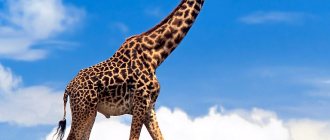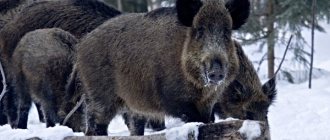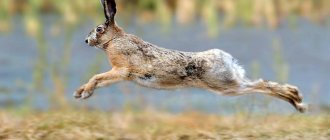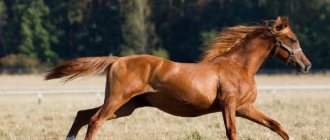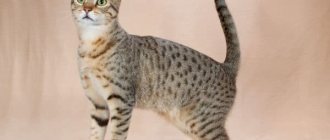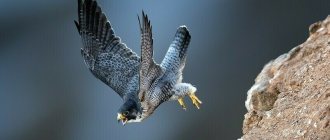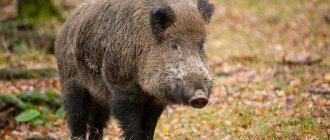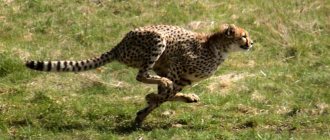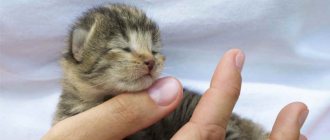Wild boar (boar) is a large mammal from the order Artiodactyla. Scientists consider the historical homeland of the animal to be Southeast Asia. Subsequently, wild boars populated almost the entire territory of Asia and Europe, as well as some regions of Africa.
The forest boar has always been considered a valuable hunting trophy. Uncontrolled killing of animals has led to a sharp decline in the numbers of many species. At the beginning of the 19th century, the complete extermination of wild boars was recorded in some Scandinavian countries, in Libya, Egypt, and the northern part of Japan. On the territory of Russia, a catastrophic reduction in the number of animals was also noted, but the protective measures taken at the end of the last century made it possible to significantly increase the number of wild boars.
General characteristics and description
Wild boars are distinguished by increased endurance and the ability to adapt to various living conditions. They have a thick skin that protects them from enemies, and the accumulated subcutaneous fat layer helps maintain a stable temperature even in severe frosts.
Boars can swim. They are quite agile: if danger approaches, the animal can jump up to 4 m in length and 1.5 m in height. The maximum speed of the boar is 40 km/h, and it can cover distances of 10-15 km without rest.
Animals have a well-developed sense of smell and hearing.
What sounds does a boar make?
What does it look like
The boar genus includes several species with the following common characteristics:
- the body is short with a massive front part and long legs;
- the head is wedge-shaped, the snout is elongated and ends in a penny;
- males have huge fangs, the length of the lower ones can reach 20-25 cm;
- straight tail with a tassel.
The color of the bristles depends on the habitat. As a rule, the color contains gray, brown and brown shades. There are also pure black boars or very light, almost whitish ones.
What is the difference between a wild boar and a domestic pig?
Wild and domestic animals differ in body shape: in wild boars the front part is much wider, while in pigs the body has almost the same thickness along its entire length.
Expressed features of the wild boar’s adaptability to its environment also help to distinguish these two species:
- In wild animals, the bristles are long and thick; before the onset of cold weather, additional fur appears;
- to protect themselves from enemies, males have two pairs of noticeably protruding upper and lower fangs;
- Boars get most of their food in the ground, so their muzzle is more elongated.
What kind of boar did you dream about?
Big
A wild boar in a dream has different interpretations, taking into account the occupation of the sleeper. A negative prediction lies in the probable acquaintance with a hard-hearted person who, despite outward goodwill, is capable of looking after only his own interests. But for entrepreneurs, a huge boar is considered a good omen. Business will be successful, and the profit will be impressive in size.
An exhausted cleaver is a warning sign for everyone. In reality you will be very worried. There may be a loss of mutual understanding within the family circle. Skinny, small
Boars represent wasted time and wasted effort. Sadness will arise due to thwarted plans and the discrepancy between reality and expectations. A cute young boar is a sign of support in a difficult life situation.
Black
boar - a warning. You should be wary of betrayal by someone close to you.
A cleaver of an unusual white color means improvement in the material sphere, and predicts a quick wedding for an unmarried girl.
Peaceful home
The boar symbolizes an influential, intelligent person. The dream also promises well-being.
many wild boars appeared at once warns of danger
. The threat will come from a group of people. A flock of wild boars warns: it is advisable not to participate in collective projects in the near future. They will bring neither moral satisfaction nor income. However, a herd of wild boars, together with domestic sow birds, is interpreted positively. This is a good time to implement your plans.
When you dream of a boar with tusks
, this symbolizes impending danger. In reality, you should beware of any conflicts.
A wounded cleaver is a good sign. It will be possible to shut up the gossipers.
Dreamed about being killed
a boar by someone other than sleeping is interpreted as a warning. Problems at work may arise, and your health will worsen. Also, a dead boar means an increased likelihood of an accident. Seeing the head of a cleaver separately means you have to make a decision that can change your entire future life.
Kinds
Bearded wild pig
The genus of wild boars includes nine living species and one extinct species. Among them, the most interesting are the following:
- Bearded pigs . Found in southeast Asia. They can be recognized by the long light bristles that cover the snout and form a kind of beard.
- Javan pigs . Individuals are medium-sized, with long legs and a very elongated snout. A distinctive feature is the presence of three pairs of warts on the face. This wild boar is listed as an endangered species on the IUCN Red List.
- Dwarf pig . The smallest pig lives in southern Asia. Unlike other species, males live permanently in the herd and guard the queens and cubs. Pygmy pigs are also considered endangered.
Javan wild pig
The most numerous species is the common wild boar. It, in turn, is divided into several groups depending on its habitat:
- western;
- Indian;
- eastern;
- Indonesian.
Each of the listed groups includes from 2 to 7 subspecies.
What does Vepr look like?
Powerful head, with a long elongated snout, erect and pointed ears. The main advantage of the wild boar is its constantly growing tusks. Dense and thick bristles cover the entire body. Along the upper edge of the body, the fur forms something like a mane when the boar is wary or frightened.
Interesting materials:
How to determine starch in sausage? How to determine the person of a verb in Latin? How to determine the median of the resulting series? How to determine the location of a freon leak? How to determine the direction of Qibla without a compass? How to determine real 4k? How to determine progesterone deficiency? How to determine the inconsistent signs of the sacrament? How to determine whether an object is animate or inanimate? How to determine the originality of Nike shoes?
How many years do wild boars live in the wild?
In their natural habitat, wild boars live 10-11 years, some individuals can live up to 14 years. The lifespan of animals depends on many factors. The main reasons for the premature death of wild boars are:
- attacks by predators (wolves, tigers, leopards, lynxes);
- skirmishes between males for territory or for a female during the mating season;
- lack of sufficient food supply due to drought or severe frosts;
- killing by hunters.
Some diseases can also shorten the lifespan of wild boars. When eating meat from an animal killed during a hunt, you must remember that some of it is dangerous to humans. Such diseases include trichinosis (infection by helminths living in muscle tissue), brucellosis (an infectious disease that affects joints, muscles and blood vessels), metastrongylosis (infection by helminths living in the bronchi and bronchioles) and others.
Wild boars kept in captivity or in protected areas live much longer. The absence of dangers, sufficient food and timely treatment significantly prolong the life of individuals. There are cases where animals lived up to 20 years.
BROWN BEAR
How to determine the age of a boar
Based on the external description of the animal, you can determine which of the three age groups it belongs to:
- piglets (young yearlings) have a short snout, small ears and covered with short bristles, sexual dimorphism is not pronounced, longitudinal stripes are clearly visible on the back;
- in gilts (two-year-olds) there is a noticeable difference between females and males, the front part of the body becomes more massive, the tail, snout and ears lengthen, the body is covered with thicker and longer hair;
- adult individuals have a powerful and short neck, a massive body, which makes the legs appear shorter, a clearly defined mane at the withers, and clearly visible lower fangs.
The age of a sexually mature animal can be more accurately determined by the number and condition of its teeth.
Wild boar hunting
Hunting wild boars is considered an extremely profitable and exciting activity. Many people kill animals for their valuable and nutritious meat, thick and beautiful wool, or for no reason, to acquire a new hunting trophy. However, when hunting such mammals, you should pay attention to many nuances. What are the features of such an unsafe hobby?
First of all, it is worth saying that hunting such large animals is an extremely risky business. It poses a danger not only to animals, but also to the hunters themselves. The fact is that boars are very difficult to seriously injure.
If, for example, you get into the fat layer in the abdominal area, you can cause only minor damage to the animal. However, even such damage will greatly anger the boar, and it will be capable of causing serious harm to the attacker.
Even if it hits other parts of the body, you can avoid hitting vital organs and only “drive the beast out of yourself.” Therefore, inexperienced hunters are not recommended to choose wild boar as their prey.
Also, these animals can attack hunters and not alone. Members of their herd often come to the aid of their comrades, even sacrificing their own lives.
Often people go hunting with their dogs. However, in this way they only endanger their assistants. Dogs, inferior to wild boars in body size and weight, are sometimes much more vulnerable than humans themselves.
How much does it weigh
Warthog
Adult size varies depending on the wild boar variety, with females typically being smaller than males. Below is the average weight of a boar of some representatives of the genus:
| View | Weight | Height (height at withers) |
| Warthog (African wild boar) | Up to 250 kg | 90 cm |
| Indian wild boar | 140 kg | 80 cm |
| Visayas warty pig | Up to 70 kg | 60-65 cm |
| Ussuri boar | Up to 300 kg | 120 cm |
| bearded pig | Up to 150 kg | 75-85 |
| Pygmy pig | Up to 4.5 kg | 20-25 cm |
The largest boar killed during the hunt weighed about 500 kg. The trophy belongs to a hunter from Alabama, USA.
Where does it live?
Indian
The historical range extends to Europe, the Middle East, India, most of the Asian continent, and northern Africa. Wild boars, which are found in America and Australia, are the feral ancestors of domestic pigs brought there by colonists.
Where does he live?
The traditional habitat of the wild boar is deciduous and mixed forests. The crowns of trees and shrubs that descend to the ground provide shelter for the animal and also provide food. You can meet a wild boar near rivers and swamps, where it hides in reed thickets. Wild boars also live in mountainous regions.
Boar behavior and nutrition
Females live in groups, the number of which can reach up to 50 individuals. The mature female dominates there. Males prefer a solitary lifestyle and come into groups only during the mating season. They hunt and search for food in the morning and evening twilight. During the day and night hours, wild boars prefer to rest. These animals have excellent hearing and an excellent sense of smell, but their vision is weak.
Thanks to their tusks, wild boars can dig the ground and get out rhizomes, tubers, and plant bulbs. This is their main food. They also feed on berries, fruits, and nuts. In spring and summer, they eat young grass, leaves of trees and shrubs, and shoots. From animal food they eat bird eggs, worms, insects, fish, they love frogs and snakes. They also eat carrion, as well as young lambs and deer. Boars are excellent swimmers and can easily cross a lake or river. They run well, can reach fairly high speeds, and given their size and weight, they are very dangerous for enemies.
A female wild boar with offspring.
Habits
Wild boars lead a predominantly gregarious lifestyle. They gather in herds that include several females and their young. Adult males prefer to live separately and join groups only during the rut. When two loppers join the herd, skirmishes occur between them for the right to cover the females.
During the daytime, the animals hide in a den made of branches and grass. The shelter is usually located in thickets of bushes or tall grass. Wild boars overwinter in pits: they tear up the snow, dig out last year's leaves and lay down on them.
Despite its threatening appearance, the wild boar is a cautious animal: it moves carefully through the forest, and upon hearing loud sounds or foreign odors, it immediately hides in a shelter and remains there, waiting out danger.
FOX
Lifestyle
Boars are considered very thrifty and prudent animals that take care of themselves and their offspring in advance.
Mammals, as a rule, live in small groups, or herds, uniting from 10 to 40 individuals. The herd is headed by a female, and there may be several times fewer males in the group.
The greatest activity of animals occurs precisely in the spring-summer period. In winter, they move a little, trying to retain warmth and energy.
Wild boars have very good eyesight and sense of smell. Thanks to their large erect ears, they hear perfectly. They can move through the forest silently, unnoticed by predators and humans. These mammals, despite their body mass, are excellent swimmers and can easily overcome long and difficult distances.
What does it eat?
Representatives of the boar genus are classified as omnivores. Their diet may vary depending on the time of year and habitat, while most of the food is obtained from the soil.
In spring, when the ground becomes soft, wild boars eat plant rhizomes, preferring juicy tubers and bulbs. They can also feed on last year's acorns and other fruits and seeds of plants preserved in the ground. After the grass cover appears, the animals eat young shoots of sedge, nettle, and marigold.
In summer, when the vegetation becomes dry and tough, wild boars again switch to rhizomes. Tearing up the ground in search of roots and tubers, they happily eat worms and insect larvae found in the ground.
At the end of summer and autumn, the main part of the diet consists of nuts, berries, fruits of bushes and trees. In winter, wild boars' diet consists of rhizomes and animal food (water rats, mice and other rodents). With a lack of food supply, they have to feed on dry leaves, moss, bark and branches of bushes.
It is known that wild boars eat spawning fish swimming in shallow waters and destroy bird nests, eating eggs and chicks.
Features of behavior
Wild boars mostly go out in search of prey at night. They feed on roots, acorns, mushrooms, and fruits. They can eat insects, bird eggs, fish, small animals and birds. There are known cases of wild boars attacking weakened roe deer and deer.
They themselves are food for wolves, lynxes, tigers, and jaguars. The speed of a boar, which it can develop in case of danger, does not allow it to escape. Therefore, it is an extremely cautious animal. The boar cannot be called a cowardly animal. A wounded animal is very dangerous. He boldly attacks the offender, using his sharp fangs.
Reproduction
Puberty in male wild boars occurs in the 4-5th year of life, females are ready to breed in the second year. The rutting period occurs in the winter months. Males, using tracks and marks, find a group of females with grown cubs and live in the herd for some time. Usually the cleaver covers all mature females, after which it leaves the group again.
A female wild boar bears offspring for 4 months. Feeling the approach of childbirth, she finds a secluded place in the forest and prepares a nest there from grass and leaves. A litter usually contains 8-10 piglets, weighing up to 1 kg.
Wild boar cubs feed on their mother's milk for up to 3 months and continue to stay with her for up to 7 months. Usually only half of the individuals from the litter survive, the rest become victims of predators or cannot tolerate harsh living conditions.
How to fight a boar?
- Keep calm. Yes, it’s easy to say, but still. Slowly move away from the animal.
- Don't scream or call for help - wild boars are very irritable. Like us in the morning after the party.
- Don't try to feed it, it's not a squirrel.
- Don't scare him or drive him into a corner by trying to take a photo.
- If you see a female boar with her young pigs, completely rule out the idea of babying and taking photographs. We remind you that females protect their cubs.
- Don't try to run away, wild boars run too fast. It's better to wait until he accelerates and jump to the side to confuse him and gain time. Animals are slow and have a long braking distance, so it will work.
- Remember that “taking down a wild boar” is quite a painstaking job; it is one of those species of animals that fight to the last. This is possible if you have a firearm, a serious one at that, and you know where to shoot. Maybe you're hunting. Experienced hunters, when attacked by a wild boar, advise letting it get closer and shooting at places that can stop it: either in the spine or in the head. During an attack, the boar lowers its head as it prepares to strike with its tusks. And it becomes an excellent target. Contrary to popular belief, bullets will not bounce off a boar's forehead.
- When it is already clear that the boar is going to attack, climb somewhere higher: it could be the hood of a car, a boulder, a rock. Boars are not strong at jumping. If you decide to climb a tree, make sure that the wild boar is at a decent distance and you will have time to do it. Boars are fast.
- There is no need to shout at the animal from the top and throw everything that comes to hand. Just wait until he gets bored and goes off to dig holes.
In a hopeless situation, engage in a fight with him.
Try to shoot or stab him directly in the face, between the shoulder blades, in the stomach, or in the axillary lymph nodes, which are located just behind his front legs. Don't let the animal knock you to the ground. Try to stay on your feet at all costs. This will give you at least some advantage in the fight. Clint Emerson . From the book “Survival in the wild and extreme situations using the methods of special services. 100 Key Skills"
Why is it dangerous for humans?
Boars are not known for their aggressive behavior and, if possible, try to avoid meeting people. Often cases of animal attacks are provoked by the person himself. In spring and early summer, the cause of aggression may be the protection of the cubs by the female. During this period, piglets become more independent and move away from their mother in search of food. If you see a piglet in the forest, you should not approach it, much less pick it up, otherwise you may encounter a dangerous enemy - an angry female. Guided by maternal instinct, she becomes aggressive and ferocious, and will protect her offspring, regardless of the wounds inflicted on her.
A meeting with a wild boar that has been injured during a hunt is also dangerous. The beast is distinguished by its endurance and strength, so situations often occur when it cannot be killed on the first try. The cleaver boar is especially dangerous, capable of inflicting quite serious and even fatal wounds with its fangs.
If you find yourself face to face with an angry animal, you should not turn your back to it and run away. You can escape from a wild boar in a tree.
NOBLE DEER
How to protect yourself from meeting a wild boar?
- First you need to find out everything about your enemy. So it's good that you are reading this article;
- if you see dug up areas of earth and hoof marks, this is an alarm bell. Better change your route, don’t be an American horror hero who always goes towards danger;
- if you are with a group, make noise, laugh. Sing your favorite songs. The boars will hear you and hide themselves. They are not deliberately looking for a meeting with a person. If you are alone, sing anyway;
- If you see a herd of wild boars busy with something: they are drinking water near a pond or digging another hole, do not approach, pass by. Otherwise, they might think that you have plans for their pits and get angry.
Interesting Facts
- Boars are among the ten most intelligent animals; they are very smart and observant.
- Boars' sense of smell is better developed than that of dogs: they can easily find food in the ground by smell. Noticing this feature, people taught wild boars to look for truffles - the most expensive mushrooms in the world, growing at a depth of 30 cm and below.
- Boars constantly sharpen their upper and lower tusks by rubbing them against each other.
- The wild hog is one of the first domesticated animals. It is known that the ancestors of modern pigs were domesticated by humans more than 10 thousand years ago in Asia.
- Boars and pigs are unreasonably called dirty: these animals are very clean, and traditional water and mud baths are just a way to get rid of parasites and cleanse stubble.
